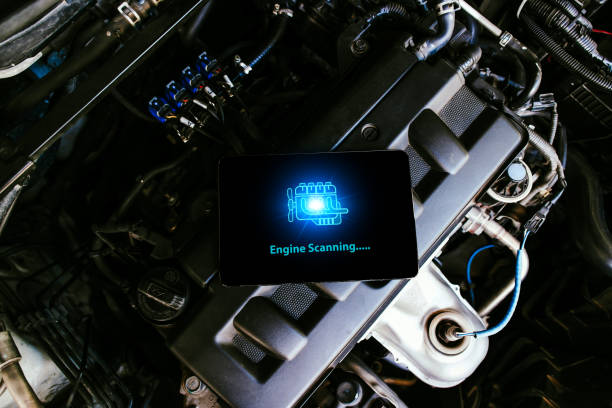The Game-Changer: The Role of Telematics in Modern Fleet Management
- chepqofficial
- Nov 4
- 5 min read
Updated: Nov 5

Overview
Telematics is revolutionizing fleet management by providing real-time data to enhance efficiency, reduce costs, and ensure safety. Key benefits include real-time monitoring, preventive maintenance, improved fuel efficiency, compliance tracking, and cost reduction. Integration with technologies like OBD2 and TPMS further amplifies its advantages. As telematics evolves, it will increasingly drive data-driven decision-making and operational excellence in fleet management.
Contents
In the fast-evolving landscape of fleet management, staying competitive means leveraging technology to enhance efficiency, reduce costs, and ensure safety. One of the most revolutionary technologies driving change in this arena is telematics. This technology plays a pivotal role in modern fleet management by offering real-time data and insights that can significantly improve operational performance. In this article, we will dive into the role of telematics in fleet management, showcasing its key benefits, functionalities, and how it integrates with other essential vehicle diagnostics and monitoring tools like OBD2, TPMS, and more.
What is Telematics?
Telematics refers to the integration of telecommunications, vehicle monitoring systems, and GPS technology to manage transportation and logistics. Fleet telematics systems collect data from OEM (Original Equipment Manufacturer) onboard systems, enabling fleet managers to monitor vehicle performance and driver behavior in real time. This technology has transcended basic tracking; it now encompasses a wide range of functionalities, from maintenance alerts to comprehensive vehicle diagnostics.
The Key Components of Telematics
Understanding the critical components that make up a telematics system is essential for fleet managers interested in maximizing its potential. Here are some of the key components:
GPS Tracking: Leverage real-time GPS data to monitor vehicle locations and optimize routes.
Onboard Diagnostics (OBD2): Utilize vehicle performance data to assess engine health and troubleshoot issues efficiently.
Telecommunication Systems: Integrate telecommunication technology for reliable data transmission between vehicles and management systems.
Data Analytics: Analyze collected data to offer actionable insights into fuel consumption, driving patterns, and maintenance needs.
Vehicle Safety Systems: Monitor critical safety features, including tire pressure monitoring (TPMS) and battery levels.
How Telematics Enhances Fleet Efficiency
The use of telematics can lead to numerous advantages for fleet management. Here are some ways telematics significantly enhances efficiency:
1. Real-Time Monitoring
Real-time vehicle tracking allows fleet managers to have a finger on the pulse of their operations. Knowing the location and status of each vehicle helps in making timely decisions in case of delays or emergencies. It enhances overall delivery standards and customer satisfaction, a critical factor in today's competitive market.
2. Preventive Maintenance
Telematics provides valuable insights into vehicle performance, enabling proactive maintenance. By integrating vehicle diagnostics tools like OBD2, managers can track engine health, vehicle mileage, and other critical systems. This proactive approach can help prevent costly breakdowns and extend the lifespan of fleet vehicles.
3. Fuel Efficiency
Fuel costs can be one of the most significant expenses in fleet operations. Telematics allows fleet managers to analyze driving behavior, such as acceleration patterns and braking habits. With this data, they can implement driver training programs focused on fuel-efficient driving styles, ultimately leading to reduced fuel expenses.
4. Compliance and Safety
Compliance with regulations and safety standards is a top priority for any fleet manager. Telematics systems can monitor driver behavior and ensure adherence to rules such as speed limits, hours of service, and vehicle inspection requirements. The integration with tire pressure monitoring systems (TPMS) and battery testers further enhances safety by alerting managers to critical issues before they become accidents.
5. Cost Reduction
With the ability to monitor vehicle usage patterns, managers can implement more efficient routing and scheduling strategies. This optimization leads to lower operational costs, including maintenance, fuel, insurance, and compliance penalties.
Integrating Telemetry with Existing Technologies
Modern fleet managers often work with a variety of vehicle technologies. Integrating telematics with existing systems significantly enhances its benefits. Here’s a look at how telematics can work alongside other technologies:
OBD2 Integration
OBD2 systems offer extensive data on vehicle performance and diagnostics. By integrating telematics with OBD2, fleet managers can gain deeper insights into not just the location of vehicles but also their health and performance. This dual functionality is crucial for effective vehicle management.
TPMS and Telematics Synergy
Integrating with tire pressure monitoring systems can prevent flat tires and other related issues. Telematics systems that report TPMS data in real time can alert fleet managers immediately in case of unusual tire pressure levels.
Battery Health Monitoring
The health of a vehicle’s battery is paramount. Utilizing a battery tester integrated with a telematics solution allows for continuous monitoring of battery levels across all vehicles. This integration ensures that fleet vehicles remain operational, reducing downtime due to battery failures.
The Future of Telemetry in Fleet Management
As telematics technology continues to evolve, fleet management will become increasingly data-driven. Future trends to keep an eye on include:
Artificial Intelligence: AI will play a significant role in predictive analytics and real-time decision-making.
Automation: Expect more automation in managing routine administrative tasks and report generation.
Integration with IoT: The Internet of Things (IoT) will allow for even more connectivity and data exchange, enhancing overall efficiency.
Advanced Safety Features: Future telematics systems are expected to integrate more deeply with advanced safety technology for better vehicle and driver protection.
Choosing the Right Telematics Solution
When evaluating telematics solutions for your fleet, consider the following factors to ensure you select a system that meets your specific needs:
Scalability: The solution should grow with your business as your fleet expands.
Usability: Look for an intuitive interface that is easy for all team members to navigate.
Integration Capabilities: Ensure the telematics system can easily integrate with your existing systems, including OBD2, TPMS, and battery testing tools.
Customer Support: A solid customer service reputation is essential for accountability and troubleshooting.
The Path Ahead: Embracing Telematics for Fleet Success
The role of telematics in modern fleet management cannot be overstated. Its ability to provide real-time data, enhance efficiency, ensure safety, and promote cost savings is crucial for fleet success in today’s dynamic environment. By integrating telematics with vehicle diagnostics such as OBD2, TPMS, and battery monitoring technologies, fleet managers can make informed decisions that lead to improved performance and compliance. As we move further into the future, embracing telematics not only fosters operational excellence but also positions fleets for sustainable growth. The modern fleet manager must leverage this valuable resource to remain competitive in an ever-evolving marketplace. Are you ready to harness the power of telematics and elevate your fleet management strategy?
FAQs
What is telematics in fleet management?
Telematics in fleet management refers to the integration of telecommunications, vehicle monitoring systems, and GPS technology that enables fleet managers to monitor vehicle performance and driver behavior in real time.
How can telematics enhance fleet efficiency?
Telematics enhances fleet efficiency by providing real-time monitoring, enabling preventive maintenance, improving fuel efficiency, ensuring compliance and safety, and reducing operational costs.
What key components are involved in a telematics system?
Key components of a telematics system include GPS tracking, onboard diagnostics (OBD2), telecommunication systems, data analytics, and vehicle safety systems.
How does telematics integrate with existing vehicle technologies?
Telematics can integrate with existing vehicle technologies like OBD2 for in-depth performance data, and TPMS for real-time tire pressure monitoring, enhancing overall vehicle management.
What should I consider when choosing a telematics solution for my fleet?
When choosing a telematics solution, consider factors such as scalability, usability, integration capabilities with existing systems, and the reputation for customer support.


